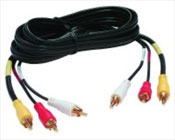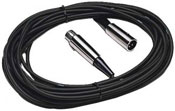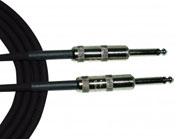Resource Guide Homepage
Resource Guide Homepage
Audio Cables
Like video, audio cable choices include digital (e.g. HDMI); RCA; XLR; 1/4"/TRS; and Speakon.
HDMI (High-Definition Multi-media Interface) is an industry-supported, uncompressed, all-digital audio/video interface. HDMI is a descendant of DVI (Digital Visual Interface).
RCA, also called phono plug, was introduced in the 1940s to connect phonograph players to radios. Stereo RCA cables are usually color coded red and white, left and right. Anyone with a television and VHS or DVD player at home will likely be familiar with these cables which are commonly used with consumer electronics.
XLR plugs and sockets are used mostly in professional applications. The most common is the 3-pin XLR3, used almost universally as a balanced audio connector for high quality microphones and connections between equipment. It does not appear on consumer playback devices.
1/4"/TRS (tip/ring/sleeve) jacks and plugs are an extremely common audio connector, especially for the original 1/4" size, but are also available in 1/8" size or mini. This is in contrast to the terms phono plug and phono jack, which refer to RCA connectors. This type of audio cable comes in two-conductor (mono) and three-conductor (stereo or tip/ring/sleeve) versions.
Speakon is a type of cable connector commonly used in pro audio systems for connecting loudspeakers to amplifiers. It features a quick-locking system with options for soldered or screw-type solderless connector for easy repair in the field. Additionally, it provides a fully insulated connection to equipment, eliminating electrical shock risks associated with high power audio amplifiers. The speakon connector is an alternative to 1/4", two-pole twist lock, and XLR connectors for loudspeakers.




